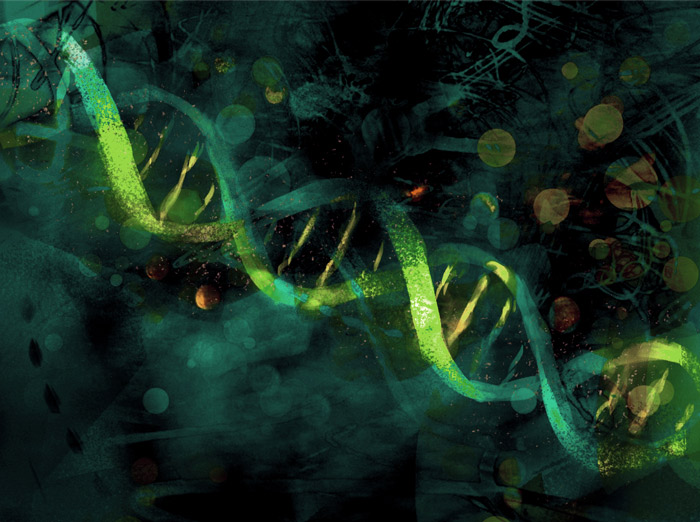CRISPR offers the potential to cure presently untreatable cancers and diseases. Moreover, it could revive an extinct organism, such as the mammoth, using tiny bits of genomic information that scientists have collected through their serendipitous discoveries.
“CRISPR is a gene editing technique that allows investigators to alter the gene sequence of an organism using a technique that is based on a genome surveillance mechanism employed by bacteria.” Dr. Richard Roy, Molson Chair of Genetics and a professor in the McGill Department of Biology, said.
The scientific community and the general public are elated by the CRISPR technology’s recently realized potential to edit genomes precisely.
What exactly is CRISPR?
In 1987, a team of scientists at Osaka University discovered five consecutive 29 nucleotide-long repeats in bacteria DNA, interspersed between non-repeated sequences that were 39 nucleotides long. Surprisingly, the word CRISPR—which stands for “clustered regular interspaced short palindromic repeats”—does not denote the fanciful technology itself; rather, CRISPR refers to the unusual DNA sequence that originally tipped off geneticists to the bacteria’s potential. At this time of the discovery, repeated sequences in bacteria were known to be rare. Hence, it did not take long before more labs followed suit in investigating the purpose of these unprecedented repeated nucleotides.
Non-repeated intervening sequences closely resemble viral genomes. Therefore, these sequences essentially serve as a memory storage for bacteria. With CRISPR, bacteria ‘remember’ the viral genomes’ profiles and lay out specific defences against the formerly exposed virus type.
Bacteria’s peaceful lives can be devastatingly disturbed upon viral intrusions. The extraordinary diversity of viruses can render the defences of the bacteria helpless.
However, oftentimes, not all of the bacteria are killed. If some survive, they activate enzymes that are responsible for cleaning up the remnants of viral genomic components. These enzymes grasp and insert the viral remains in between the CRISPRs of the bacterial genome. If the same type of virus were to attack the surviving bacteria, the bacteria would know what to do. Instead of using CRISPR as a defensive mechanism, scientists have harnessed the bacteria’s ability to replicate gene sequences to modify genomes with specific genes of interest.
Whose idea is it?
With such a radical new technology, there is extreme financial opportunity. Rights of ownership over the CRISPR technique have lingered since its initial discovery. Recently, the CRISPR patent disputes were partially settled between the Broad Institute of the Massachusetts Institute of Technology (MIT) and Harvard, and the University of California (UC) Berkeley. On Feb. 15, the U.S. Patent Trial and Appeal Board ruled in favour of the Broad Institute. As a result, the Broad Institute won the patent pertaining to editing eukaryotic genomes, a patent that UC Berkeley considers to be interfering with its claim.
“The dispute was about who the patent belongs to,” Roy said. “Feng Zhang [of the Broad Institute] got the patent, leaving the scientific community perplexed. Jennifer Doudna [of UC Berkeley…] quickly saw that there were ways to co-opt the process to provide a means of directing it to whatever sequence an investigator might want to target.”
What’s next?
CRISPR will soon be more sophisticated. What would happen to our children if we are armed with a refined and reliable CRISPR technology? For example, eggs and sperm are fertilized on a petri dish instead of in the mother’s fallopian tube during in vitro fertilization (IVF). Although IVF was initially deemed unethical, most people who vehemently disagreed with the technology now accept it. This could be the case with CRISPR as well. For now, however, CRISPR holds several unresolved ethical issues. For instance, altering genes in the human population could be irreversibly consequential as the modified genes will carry on for generations.
“The future is hard to predict, but CRISPR is likely only limited by the imaginations of the end users,” Roy said. “This is still ethically very nebulous, so lawyers, philosophers, policy makers, and scientists will have to engage in a long and active discussion as to how to proceed and what will be off limits.”









Can Justin Trudeau and the Quebec ‘financial powers that be’ provide the underwriting for the necessary labs to move further along this new portal to the 21st century?Can we prevent this from becoming another Avrow Arrow like incident? Can we in fact slow the brain drain to the USA by facilitating this kind of research here in Canada?